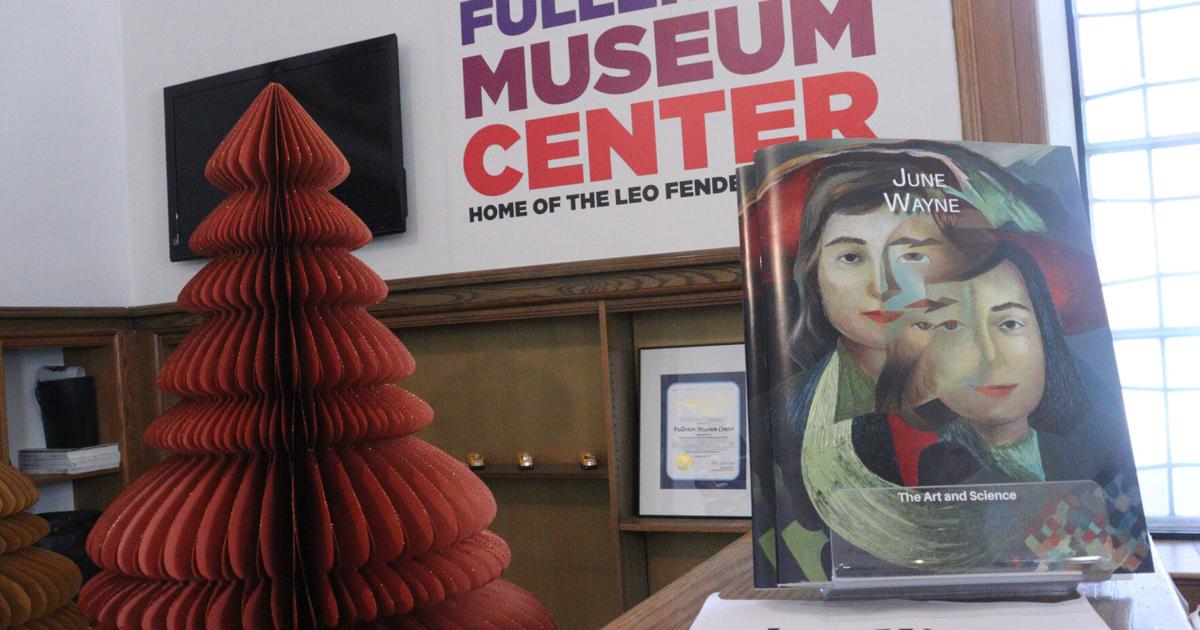The Fullerton Museum Center’s “Art of Everything” exhibit highlights the multi-talented June Wayne’s impressive imprint and artwork. Following the eras and focuses of her work, Wayne’s artwork lays an interesting and perennial suggestion about modern life, science and technology.
Located in downtown Fullerton at the intersection of Wilshire and Pomona, the museum showcases people and movements foundational to modern life and community.
The Art of Everything first opened Sept. 7 and currently runs alongside the FMC’s “Strumming through the Decades: 30 Years with Fender” exhibit.
“I just think she’s so fascinating because she never allowed herself to be categorized as a certain artist,” said Georgette Collard, Fullerton Museum Center’s head curator.
Wayne proved to be a prodigy from as young as 17. Born in Chicago, her work reflects the vast landscapes of her childhood, like the Great Lakes reflected in her wave pieces. A visionary, she complexly wove scientific themes into her work — literally and figuratively.
“Even with her imagery, she didn’t show illustrative ways of science,” Collard said. “But it’s a very poetic visual that she gives you.”
Wayne worked in textiles, painting and lithography — the latter of which she brought into a new American renaissance in Los Angeles.
Lithography is an intensive printing process in which a design is drawn onto a smooth plate of a certain stonetype that chemically imprints onto the pressed page. Invented in the 18th century, Wayne admired its detailed quality and simulated porosity that further imitated the natural subjects she fixated on.
In the 1960s, she opened the Tamarind Lithography Workshop; underwritten by the Ford Foundation, it brought lithographic masters to California, re-stimulating interest in the practice.
Moreover, the workshop was a space Wayne intentionally included women and African American artists. That was especially important at a time when minorities weren’t given opportunities in esteemed institutions like that, said Collard.
Wayne’s wit and skill elevated her work both in physical and topical capacities. Series such as her layered textural earthquake series and large tapestry works on abstract celestial bodies all accumulate her interest in the sciences through a romantic lens.
Her grande tapestry, “On Verra,” French for “we’ll see,” converges her focus on geology, tidal waves and the cosmos and is being shown to the public for the first time at the Fullerton Museum Center.
Collard said Wayne was continuously inspired by the contemporary groundbreaking scientific themes of her time, “ultimately with the “On Verra”that creates this whole three scientific themes in one tapestry, which is just extraordinary.”
Visitor Jessica Martinez said seeing Wayne’s work for the first time was striking and familiar.
“There’s something about the textile medium that feels both nostalgic and welcoming,” Martinez said.
The tactile nature of her work is strewn across the gallery in pieces like “The Messenger,” which uses sand for a grainy finish and in her optically engaging earthquakes series of paintings made from packing peanuts and acrylic paint.
Intern Amanda Manriquez said it is beautiful that she uses a medium non-biodegradable and made it into something valuable in her tectonic representations.
“I hope they take away a part of themselves,” Manriquez said.. “She’s almost asking you to look within, but in a more abstract way.”
In coordination with the Getty Institute’s Pacific Standard Time Initiative and as part of the Landau traveling exhibits, the exhibit will be available at the Fullerton Museum Center until Jan. 5, 2025.
